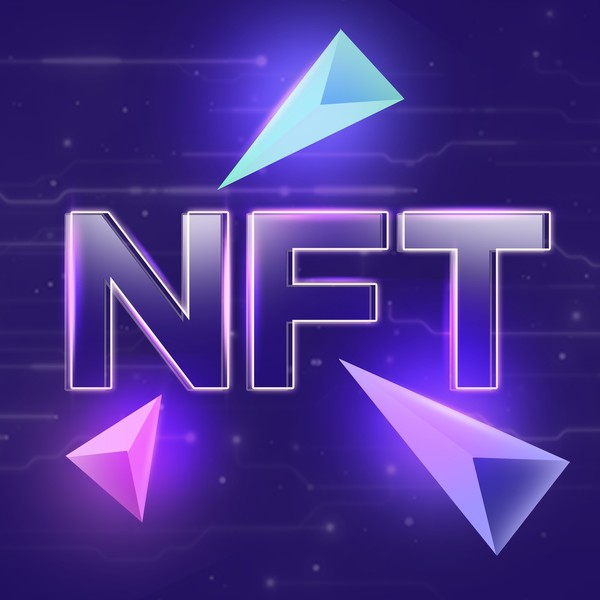New form of digital artwork trespasses the realm of copyrights

“OUCH, CHARLIE bit me!” The viral 2007 YouTube video has been sold to a bidder ready to pay $760,999 in Non-Fungible Token (NFT) at an auction[1]. Although they are neither the uploader nor the subject of the video, they have now become the owner of it. While the original video and its copied versions are to remain on YouTube according to the buyer’s will, the buyer has permanent ownership of it on the blockchain. Even though this privileged status attracts NFT users, the market’s obscure standards regarding a creation’s original copyright is likely to undermine the art community, leaving individual artists defenseless from those who profit off their work.
Consequences of the NFT boom
NFT is a non-interchangeable set of data engraved in the Ethereum[2] blockchain. Its unique identification code represents the ownership of properties ranging from music and videos to artwork. By recording information through minting[3], each digital unit that identifies an item is created as a digital asset on the blockchain. As a digital certificate, the NFT’s originality is easily verifiable, assuring both buyers and creators secured endorsement of the piece. NFT’s authenticity and low entry barrier attract artists and individuals from various fields. Owing to the platform’s rising fame, many public figures and artists are increasingly collaborating with one another, forming their own NFT communities as a secondary business to attract fans. In 2021, Canadian singer-songwriter Grimes sold around $6 million worth of digital artworks named WarNymph collections via Nifty Gateway[4]. In fact, age is not a hindering factor when it comes to profiting from NFTs. The creator of Weird Whales, 12-year-old Benyamin Ahmed successfully acclaimed himself as an early adopter in the NFT market by coding his artwork containing 3,350 pixelated whales[5]. Even videos of celebrities going live on YouTube, 20-second highlights of top NBA players’ games, and tweets are minted into highly-priced NFTs. This seemingly infinite nature of NFT’s source material becomes problematic when creators are authorized to profit off digital artwork that infringes upon pre-existing works.
Copyright controversies
In December 2021, an LA-based digital artist Mason Rothschild dropped 100 “MetaBirkins” on the NFT market converting luxury fashion brand Hermès’ iconic Birkin bag into a digital file[6]. Covered with various color palettes and patterns, this piece of art went viral, with some of the 100 MetaBirkin bags nearly reaching the price of an actual Birkin bag[7]. Witnessing the sudden takeover of its iconic Birkin by a digital artist, Hermès officially stated that it had not been notified beforehand by Rothschild about his commercial use of the Birkin bag and that the project was an infringement of its intellectual property and trademarks[8]. Since Hermès filed complaints against Rothschild in January 2022, the NFT’s fate will be determined by the court’s ruling. However, it is still questionable whether Rothschild’s digital “art” should be considered a novelty that deserves enormous profits from the blockchain[9]. In the “real” world, copyrights and trademarks were undisputable concepts that represented the identity of certain companies or products. The value of a brand’s product is often hinged upon the sustained protection of its copyrights and trademarks. Copyrighted products are classified as intellectual properties, and companies have always publicly adhered to this institutional protection, engaging in official collaborative projects whenever they wished to annex another brand’s idea. If a piece of work in the “real” world can be readily reproduced by an anonymous digital creator who can appropriate it and sell it as a digitized version, how would the original artists be motivated to visualize their creativity? NFT’s exposure to piracy and lack of protective measures to safeguard against infringement cause ethical concern as individuals may involuntarily contribute to the sales of a plagiarized NFT.
* * *
NFT is indeed a noteworthy digital trend that we must familiarize ourselves with, but it definitely overlooks the efforts of the traditional art community. Its aim to establish a trustworthy platform that can coexist with the real market remains obscure, and there might be no place for “original” creators to claim their rights within the NFT domain.
[1] CNN
[2] Ethereum: A blockchain-based platform operating “Ether” as a basic unit of cryptocurrency
[3] Minting: A process of generating NFT digital assets on the Ethereum blockchain
[4] TheVerge
[5] CNBC
[6] Financial Times
[7] Highsnobiety
[8] ELLE
[9] The National Law Review

